Concrete Plastic Hinge#
The SSD task Concrete Plastic Hinge tasks aims to deliver a ready-to-use material model for concentrated plasticity hinge within a pushover workflow.
Based on nonlinear a cross sectional analysis, the task offers direct computation of an idealised work laws accounting for the force-moment-moment (P-M-M) interaction.
See also
See the CSA manual for an extended theoretical background.
Input#
Define the input settings for a calculation of an idealised plastic hinge based on an interactive on-the-fly computation of the sectional capacity.
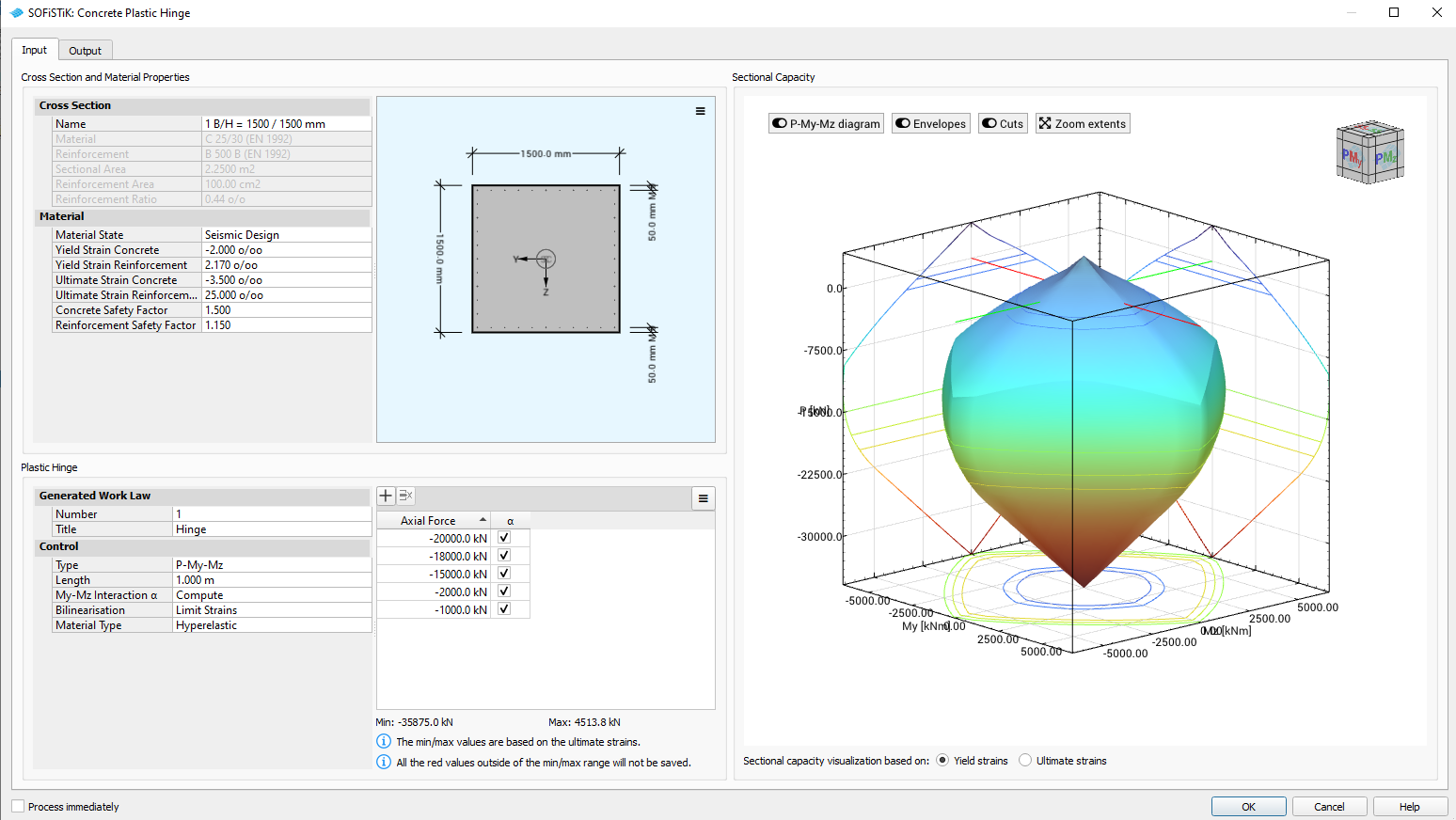
GUI Task Concrete Plastic Hinge - Input Tab (click on image to enlarge)#
Cross Section and Material Properties#
Cross Section#
Select a concrete cross section for the computation of the plastic hinge. The grey fields provide informative information for the previously calculated cross sections and materials.

GUI Task Concrete Plastic Hinge - Input Tab - Cross Section#
Note
The cross sections or materials need to be recalculated before entering the plastic hinge task, if there are any subsequent changes to them.
Material#
Define the material characteristics that are required for the cross sectional analysis and plastic hinge computation.
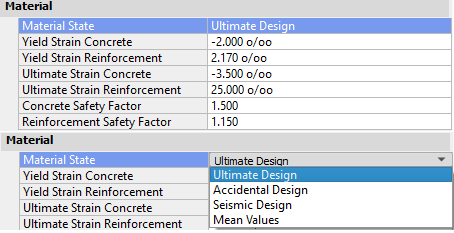
GUI Task Concrete Plastic Hinge - Input Tab - Material#
Material State - The material state defines the type of material law (ultimate or serviceability) and the corresponding safety factors. The corresponding material laws and safety factors are based on a selected material state that corresponds to a design state of a building code, with exception of the mean values that refers always to unfactored serviceability material laws.
Limit Strains -The provided yield and ultimate limit strains for concrete and reinforcement control the cross sectional analysis and idealisation of the plastic hinge (i.e. bilinearisation). The concrete is assmued to carry only compressive forces; therfore, only negative input values are permitted for the concrete strains. Assuming isotropic material law for the reinforcement, only positive values are permitted for the reinforcement strains.
Safety Factors - Per user preference, the material safety factors can be directly modified only for the purpouse of plastic hinge computation.
Plastic Hinge#
Generated Work Law#
Select the number and title of the generated plastic hinge work law to be exported for further use.

GUI Task Concrete Plastic Hinge - Input Tab - tab_GeneratedWorkLaw#
Control#
Specify the plastic hinge properties based on selected axial force levels.
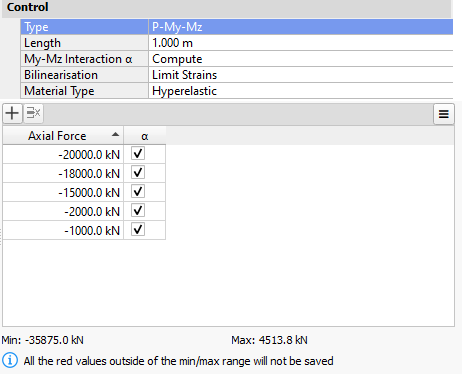
GUI Task Concrete Plastic Hinge - Input Tab - Control#
Hinge Type - Six types of plastic hinge work law may be defined, depending on the interaction between the force and moments:
Type |
Description |
|---|---|
P-My-Mz |
Hinge accounting for axial force - moment (y) - moment (z) interaction |
P-My |
Hinge accounting for axial force - moment (y) interaction |
P-Mz |
Hinge accounting for axial force - moment (z) interaction |
My-Mz |
Hinge accounting for moment (y) - moment (z) interaction (single axial force level) |
My |
Hinge for moment in y direction (single axial force level) |
Mz |
Hinge for moment in z direction (single axial force level) |
Note
Multiple axial force levels may be added in the table only for the hinge types that consider axial force interaction (P-My-Mz, P-My, P-Mz)
Hinge Length - The plastic hinge length is a required input to translate the sectional force-deformation relation into element force-displacement relation. This value is usually defined in building codes.
My - Mz Interaction - Compute or enter manually the interaction exponent for the moment-moment interaction:
Manual Input - Enter an interaction exponent larger than 1 to account for the interaction. Setting the interaction exponent to 0 yields no interaction between the two moments.

Compute - Compute the average interaction exponent based on the axial force levels provided in the table. At least one normal force level should be selected.

Note
The My - Mz interaction is only relevant for hinge types that consider interaction between the two moments (P-My-Mz, My-Mz).
Bilinearisation - Type of idealisation of the moment-curvature relationship for computation of the plastic hinge.
Material Type - Material type for the work laws of the plastic hinge.
Sectional Capacity#
On-the-fly computation of the ultimate sectional capacity based on the material State, safety factors and Ultimate or Yield Limit Strains in the material tab (independent of the plastic hinge type). The figure is intended to guide the selection of the axial force levels and it is interactive with the axial force table. Selecting particular levels in the table results in cutting planes on the PMM figure.
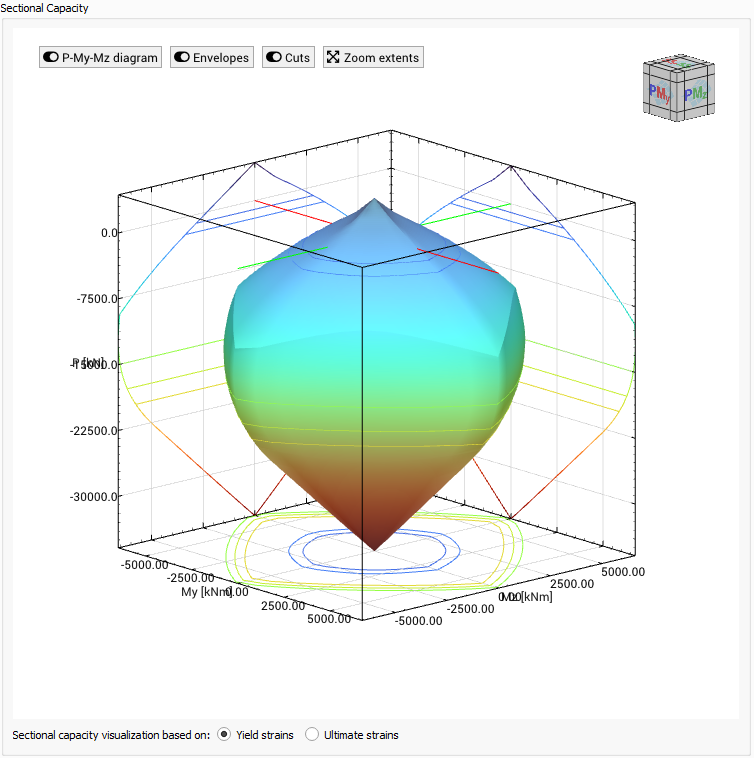
GUI Task Concrete Plastic Hinge - Input Tab - Sectional Capacity#
Output#
Select the output text properties and plots for the report.
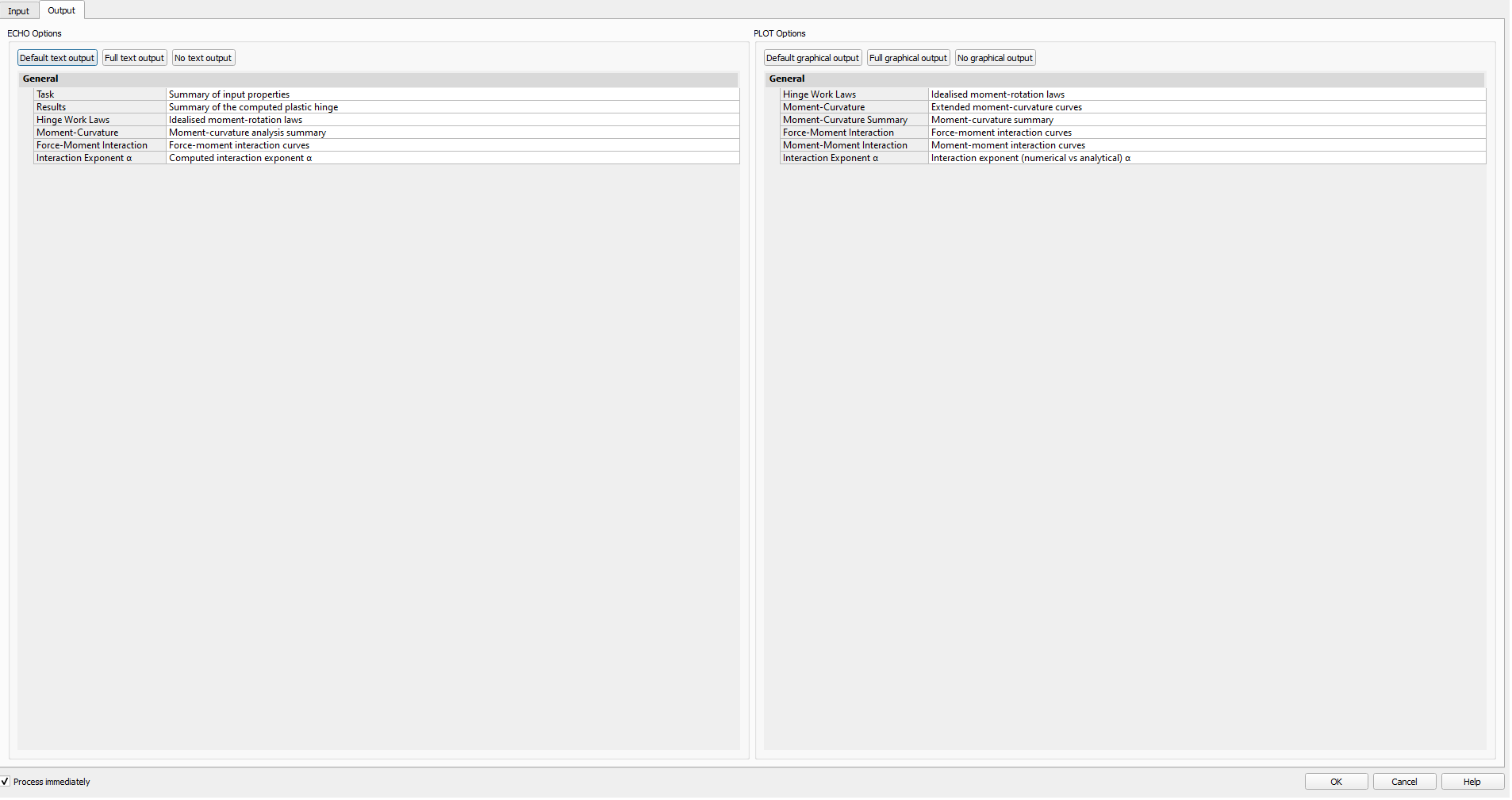
GUI Task Concrete Plastic Hinge - Output Tab#